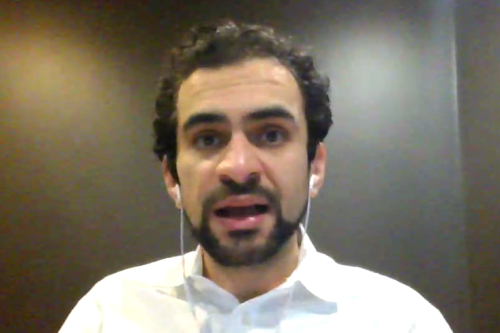Potential rise in turnover, legal costs 'a very real risk factor’ for employers

With the pandemic and subsequent downturn in the economy, many employers were forced to carry out mass layoffs. But those moves can also be distressing for the employees who remain.
“Their employee engagement drops in the range of 30 per cent,” says Hamoon Ekhtiari, CEO of Toronto-based FutureFit AI, a company that helps people make career transitions.
“[Employers] should care very much because it also impacts what are often described as the survivors of layoffs, the remaining employees at the company who’ve just seen their peers be impacted,” he says.
“Their job performance equally drops when layoffs — even when necessary — are not handled well by the company.”
The mass layoffs can also lead to increased involuntary turnover, as well as rising legal costs and negative press coverage of the company, says Ekhtiari, who spoke at the recent annual conference and tradeshow of the Human Resources Professionals Association (HRPA).
“We’ve heard from chief risk officers that are now considering this as a very real risk factor to analyze and include,” he says.
Layoffs still considered taboo
Too often, layoffs are not discussed and are considered a taboo subject, says Ekhtiari.
“We haven’t reimagined them in decades. They still happen exactly as they did when they first began in the form of mass layoffs back in the 70s and 80s,” he says. “When was the last time you heard a company directly talk about the layoffs that they end up in the news about?”
One of the largest impacts, according to Ekhtiari, is in the pay packages for those laid-off workers themselves.

Hamoon Ekhtiari
“Twenty years later, their income is 20 per cent on average lower than their peers due to no fault of their own by having simply been impacted by a business event.”
Combatting the negative impact of layoffs
But layoffs don’t have to negatively impact companies, according to Ekhtiari, citing Nokia as an example.
When the company knew it had to reduce staff, it decided to be upfront with employees by saying that things would have to change within the next 18 months, and it promised to work with its people.
“They gave five or six pathways to every employee, every one of them with some resources and supports available, and [had] a very explicit, proactive journey with that team to say, ‘We’re here with you and we’ll be there to help you land softly, no matter where you go,’” says Ekhtiari.
Unlike previous layoffs, “the results were radically different,” he says. “The numbers and what they showed in terms of minimizing legal costs, minimizing negative brand coverage at the very basic level [and] then the sheer level of positive reaction they had from their own employees who were leaving the company because of this impact [were impressive].”
Combining AI with outskilling
Many employees facing this type of outcome should consider taking an outskilling approach that uses artificial intelligence (AI), according to Ekhtiari.
“It can locate where you’re starting from, recommend destinations of careers you might want to consider, and then build a personalized dynamic roadmap that takes you from A to B, just like a GPS would. Imagine one that is intelligent and powered by AI for your career,” he says.
“It would, for example, parse your resumé to understand your past experiences and capabilities. It would use that information to build a profile of not just the jobs you’ve had but also your interests and career preferences; your capabilities, your desires, what you have and haven’t liked [and] use that profile to recommend, from the world of opportunity, a wide range of career destinations.”
More than one millions jobs in Canada might be affected by AI, according to a recent report, and many employees say that they would rather interact with a robot instead of their managers when it comes to mental health at work.




